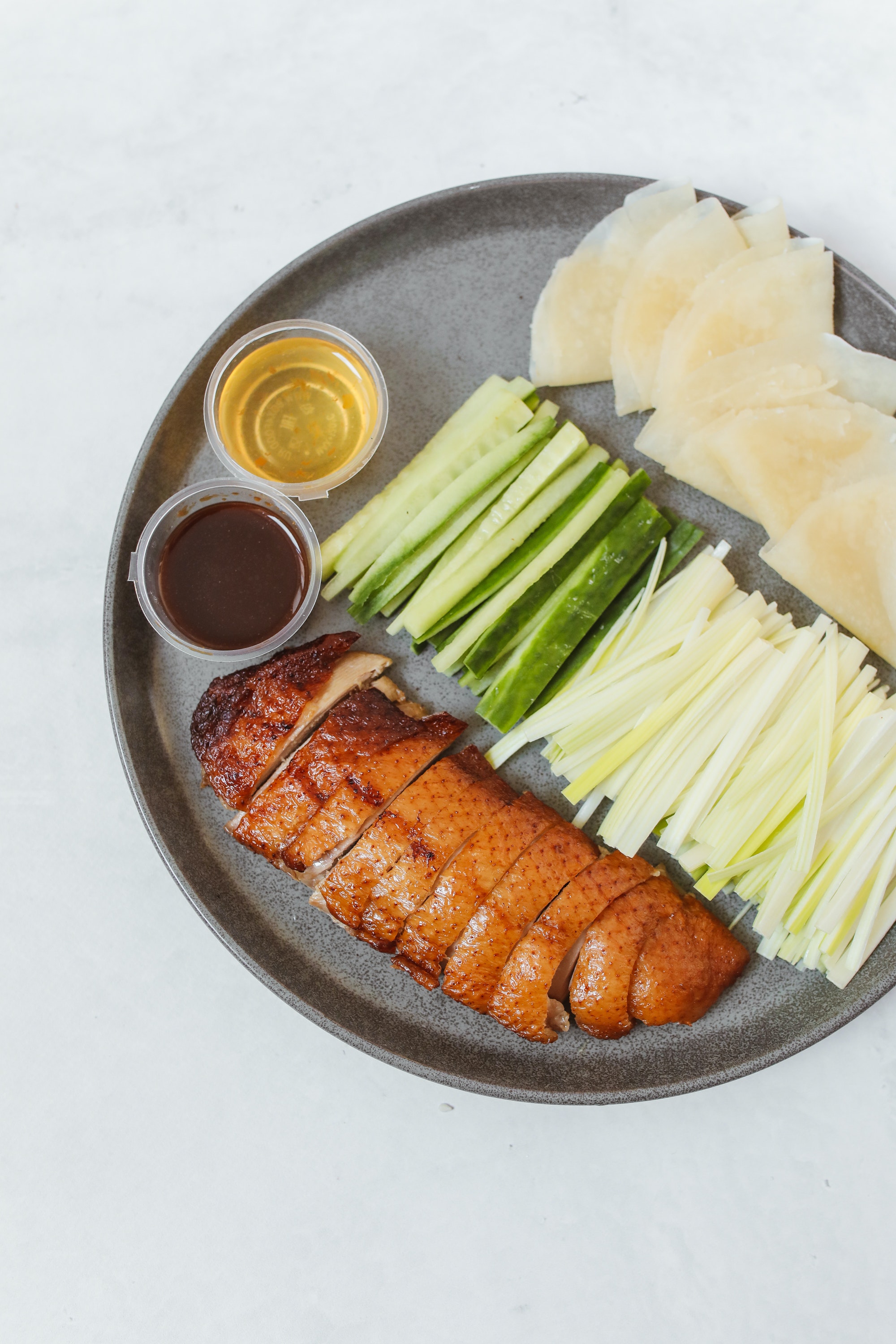其他菜系 Other Cuisines
-

Beijing Roast Duck
京菜 Beijing Cuisine
In the early days of Beijing, people’s eating habits were quite similar to those of Shandong Province. Many chefs were from Shandong province, so Shandong cuisine was the base of Beijing cuisine. With the development of The Times, especially when Beijing became the political, economic, and cultural center of China, as a result, the cooking skills of chefs have improved, and the main cuisines from around the world have converged in Beijing. Therefore, the cooking methods and tastes of Beijing cuisine are very diverse. Beijing cuisine also requires dishes to be complete in the color, fragrance, taste, layout, and installation of dishes.
-
Wenchang Chicken
琼菜 Hainan Cuisine
Hainan cuisine is mainly seafood, and the shadow of other local cuisines can also be found. For example, Cantonese cuisine and Fujian cuisine have a significant influence on Hainan cuisine. In addition, Hainan cuisine is mixed with the cuisines of the local Li and Miao ethnic groups. Hainan cuisine is tender and sweet in taste. It mainly uses local ingredients, such as coconut, Wenchang chicken, and Dongshan sheep.
-

Lotus Root Soup- Photo by Zheng Zhou
楚菜 Chu Cuisine (Hubei Cuisine)
It can be known from the records that Chu cuisine is the earliest menu recorded by writing in Chinese history. It can be known that Chu cuisine originated in the Eastern Zhou Dynasty. Chu cuisine developed and matured in the Ming and Qing dynasties, and was one of the top ten Chinese cuisines in 1983. The basic feature of Chu cuisine is steaming. The taste is juicy, hot, and melts in your mouth, so it can best preserve the original flavor. Bean paste and black bean sauce are used for seasoning, soy sauce is rarely used, and the combination of color and flavor is emphasized. Traditional Chu dishes prefer steaming, simmering, frying, burning, and stir-frying; Characterized by thick juice, flavorful, pure taste, with simple folk characteristics.